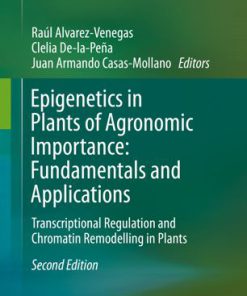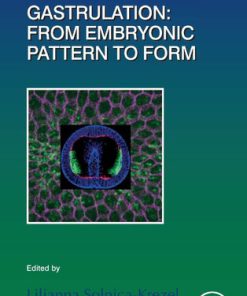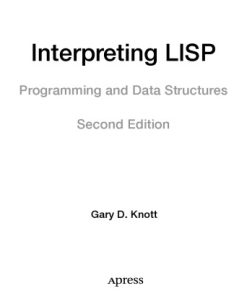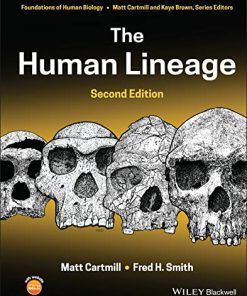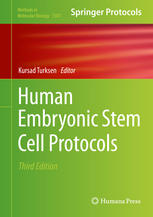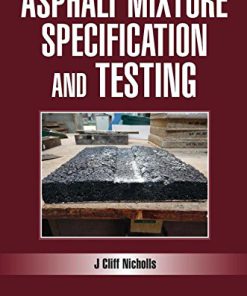Chromatin Regulation of Early Embryonic Lineage Specification 1st Edition Jason Knott 331963187X 9783319631875
$50.00 Original price was: $50.00.$25.00Current price is: $25.00.
This completed downloadable of Chromatin Regulation of Early Embryonic Lineage Specification 1st Edition Jason Knott

Instant downloaded Chromatin Regulation of Early Embryonic Lineage Specification 1st Edition Jason Knott pdf docx epub after payment.
Product details:
- ISBN 10: 331963187X
- ISBN 13: 9783319631875
- Author: Jason Knott
Five leaders in the field of mammalian preimplantation embryo development provide their own perspectives on key molecular and cellular processes that mediate lineage formation during the first week of life. The first cell-fate decision involves the formation of the pluripotent inner cell mass (ICM) and extraembryonic trophectoderm (TE). The second cell-fate choice encompasses the transformation of ICM into extraembryonic primitive endoderm (PE) and pluripotent epiblast. The processes, which occur during the period of preimplantation development, serve as the foundation for subsequent developmental events such as implantation, placentation, and gastrulation. The mechanisms that regulate them are complex and involve many different factors operating spatially and temporally over several days to modulate embryonic chromatin structure, impose cellular polarity, and direct distinct gene expression programs in the first cell lineages.
Table of contents:
- Chromatin Remodelling Proteins and Cell Fate Decisions in Mammalian Preimplantation Development
- Introduction
- Events Associated with the First Lineage Decision: TE Versus ICM
- The Second Lineage Decision: Epiblast Versus PrE
- The Role of Chromatin Modifiers in the Formation of the Early Embryonic Lineages
- CHD4: A Precise Subtle Regulator of Fate
- BRG1/BAF Chromatin Remodellers
- INO80 and ISWI Chromatin Remodellers
- Concluding Remarks
- References
- CHD1 Controls Cell Lineage Specification Through Zygotic Genome Activation
- Introduction
- Mouse Preimplantation Development
- CHD1 (Chromodomain Helicase DNA-Binding Protein 1) (Fig. 1)
- Cell Lineage Specification
- The Roles of CHD1 During Mouse Preimplantation Development
- The Relationship Between CHD1 and HMGPI During Mouse Preimplantation Development
- Conclusion and Future Directions
- References
- Transcriptional Regulation and Genes Involved in First Lineage Specification During Preimplantation
- Mammalian Preimplantation Development
- Maternal-to-Zygotic Transition
- Embryo Compaction and Polarization
- Blastomere Allocation and ICM/TE Separation
- Key Transcriptional Regulation During ICM/TE Separation
- Hippo Signaling and TE Specific Genes
- Hippo Signaling Promotes ICM Fate Acquisition
- Notch Signaling and TE Specific Genes
- Transcription Factor AP-2γ (Tfap2c) Promotes TE
- Heterogeneities in Early Blastomere Bias Cell Fate
- Epigenetic Control on Transcription During Lineage Specification
- Identification of Genes Essential for Lineage Specification
- Conclusions
- References
- ROCK and RHO Playlist for Preimplantation Development: Streaming to HIPPO Pathway and Apicobasal Pol
- Introduction
- Regulation of Lineage-Specific Gene Expressions by HIPPO Signaling and Cell Position
- Apicobasal Cell Polarity Connects Cell Position to HIPPO Signaling
- RHO and ROCK in Cell Lineage Specification
- Activities of RHO and ROCK Are Essential for TE Formation
- Statins Cause Phenotypes Similar to Inhibition of RHO and ROCK
- Effect of RHO/ROCK Inhibition on Apicobasal Cell Polarity
- Possible Mechanisms of How RHO and ROCK Regulate TE Specification
- Questions to Be Answered
- Concluding Remarks
- References
- XEN and the Art of Stem Cell Maintenance: Molecular Mechanisms Maintaining Cell Fate and Self-Renewa
- Stem Cell, Defined
- What Are the Extraembryonic Tissues?
- Stem Cell Lines from the Extraembryonic Endoderm
- Maintaining the XEN Cell State
- Extrinsic Cues Maintaining the XEN Cell State
- Intrinsic Cues Maintaining the XEN Cell State
People also search:
mechanisms of chromatin regulation
aberrant chromatin regulation
sirtuins and chromatin regulation
chromatin regulation of gene expression
jumonji family genes in chromatin regulation
You may also like…
Politics & Philosophy - Anthropology
Biology and other natural sciences
Gastrulation From Embryonic Pattern to Form 1st Edition Lilianna Solnica-Krezel
Biology and other natural sciences - Human Biology
Business & Economics - Professional Finance
Arts - History & Criticism
Pop Trash The Amazing Art of Jason Mecier 1st edition by Jason Mecier 1452170251 9781452170251
Biology and other natural sciences
Human Embryonic Stem Cell Protocols 3rd Edition Kursad 9781493926688




